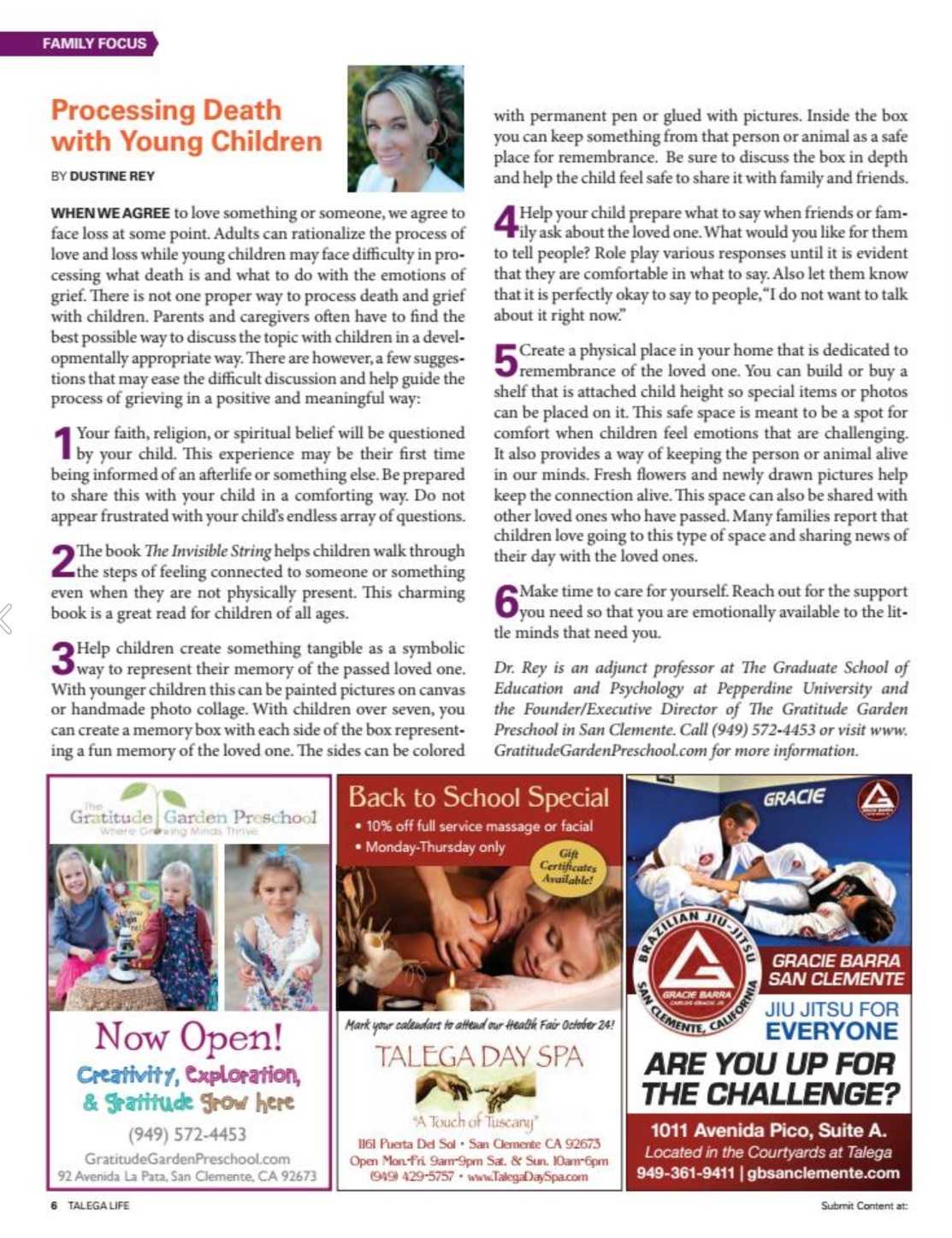When we agree to love something or someone, we agree to face loss at some point. Adults can rationalize the process of love and loss while young children may face difficulty in processing what death is and what to do with the emotions of grief. There is not one proper way to process death and grief with children, parents and caregivers often have to find the best possible way to discuss the topic with children in a developmentally appropriate way. There are however, a few suggestions that may ease the difficult discussion and help the process of grieving in a positive and meaningful way.
- Your faith, religion, or spiritual belief will be questioned by your child. This experience may be their first time being informed of an afterlife or something else. Be prepared to share this with your child in a comforting way. Do not appear frustrated with your child’s endless array of questions.
- The book The Invisible String helps children walk through the steps of feeling connected to someone or something even when they are not physically present. This charming book is a great read for children of all ages.
- Help children create something tangible as a symbolic way to represent their memory of the passed loved one. With younger children this can be painted pictures on canvas or hand-made photo colleague. With children over seven, you can create a memory box with each side of the box representing a fun memory of the loved one. The sides can be colored with permanent pen or glued with pictures. Inside the box you can keep something from that person or animal as a safe place for remembrance. Be sure to discuss the box in depth and help the child feel safe to share it with family and friends.
- Help your child prepare what to say when friends or family ask about the loved one. What would you like for them to tell people? Role play various responses until it is evident that they are comfortable in what to say. Also let them know that it is perfectly okay to say to people, “I do not want to talk about it right now.”
- Create a physical place in your home that is dedicated to remembrance of the loved one. You can build or buy a shelf that is attached child height so special items or photos can be placed on it. This safe space is meant to be a spot for comfort when children feel emotions that are challenging. It also provides a way of keeping the person or animal alive in our minds. Fresh flowers and newly drawn pictures help keep the connection alive. This space can also be shared with other loved ones who have passed. Many families report that children love going to this type of space and sharing news of their day with the loved ones.
- Make time to care for yourself. Reach out for the support you need so that you are emotionally available to the little minds that need you.

